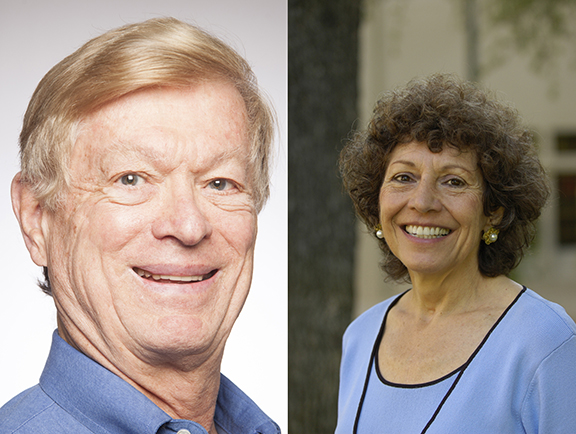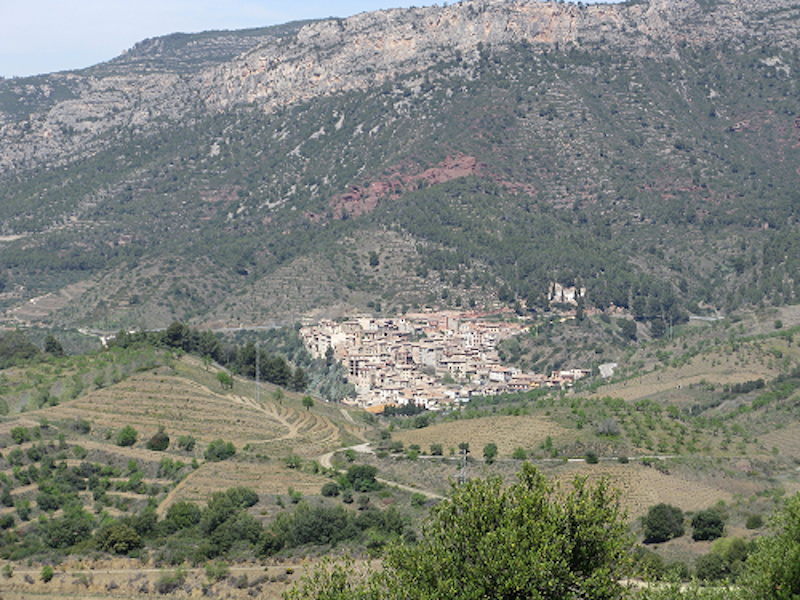
The hauntingly beautiful Priorat region of Spain is located in the south of Catalonia in the province of Tarragona. The wineries we visited were located in or near the small villages that dot the landscape and nestle gracefully among the region's sheer and jagged peaks of rocks, steep mountain slopes, and crushed-slate stone. La Vilella Baixa (see photo, above) with its population of just over 200 is a typical example. However, the stark beauty and remoteness of the region were not the primary reason for our visit.
Why the Priorat?
The Priorat has quite recently experienced a significant reawakening as a wine region, and growing wine regions offer increased opportunities to women winemakers. We study women winemakers in major wine regions of the world, and the factors that may facilitate women gaining positions in the traditionally male-dominated field of winemaking.
 This rebirth or reawakening was led by a Catalan winemaker, René Barbier, who understood the region's unique and rocky slate soils, locally known as llicorella (see photo, right), and the intense, full-bodied red wines they could produce. Daphne Glorian-Solomon, whom we describe later in the article, joined with Barbier and three other winemakers in this reawakening.
This rebirth or reawakening was led by a Catalan winemaker, René Barbier, who understood the region's unique and rocky slate soils, locally known as llicorella (see photo, right), and the intense, full-bodied red wines they could produce. Daphne Glorian-Solomon, whom we describe later in the article, joined with Barbier and three other winemakers in this reawakening.
Alongside the indigenous Garnacha (also known as Garnatxa or Grenache) and Cariñena (or Carignane or Carignan), Priorat winemakers may use other varietals such as Merlot, Syrah, and Cabernet Sauvignon for their red wines. The region's white wines are made from the four authorized white varietals, Garnacha Blanca, Macabeo, Pedro Ximenez, and Chenin Blanc.
The Winemakers and Our Visits
The five winemakers with whom we met ranged from the already "famous" to "rising stars." Without exception, they were inspiring, talented, hard working, proud of their wine region, and completely in love with what they do.
We first met with Daphne Glorian-Solomon, the winemaker and proprietor at Clos Erasmus, and one of the founders of the "reawakened" Priorat wine region, as noted earlier. Our second visit was with Sandra Doix Mora at Mas Doix, a family winery with a long history of grape growing. This was followed by visits with Isabel Fortuny at Ferrer-Bobet, a relatively new winery that had its first vintage in 2005, and with Maria Sangenís at Sangenís i Vaqué, a family winery using traditional methods. Our final visit was Torres Priorat, a relatively new project under the direction of Mireira Torres Maczassek.
We stayed at a small hotel just outside the centuries-old village of Gratallops, population 250, located in the heart of the Priorat. This village was relatively close to the five wineries that we had arranged well in advance to visit. The "short" distances indicated on our map turned out to be quite deceptive! The roads through the mountains are quite steep and very winding, and we were late (or lost) on more than one occasion. Nonetheless, we were warmly welcomed at each visit, and the conversations we had were heart-felt, authentic, and informative.
The Conversations about the Career Paths Taken
Daphne Glorian-Solomon
Being adventuresome led her to the Priorat.
The morning we met with the quite famous and equally modest Daphne Glorian-Solomon of Clos Erasmus, she was scheduled to be off to Paris in a few hours. She travels a great deal, so we were pleased and grateful to be able to meet with her. She hosted us at her comfortable home in Grattalops, and we soon felt like we were talking with a long-time friend.
Winemaking was not an intentional career path for Daphne, who is French by birth and grew up in Switzerland. She trained as a lawyer and received her degree from the University of Paris in the mid-1980s when she was in her early twenties. As fate would have it, she was offered an intriguing job before she could begin practicing law. A noted English wine merchant living in Paris hired her to look after things while he went off to New Zealand to get married. He also asked her to select wines in Burgundy for his customers. Daphne found "that she loved it." She was "tasting all the time and totally enjoying being in the wineries."
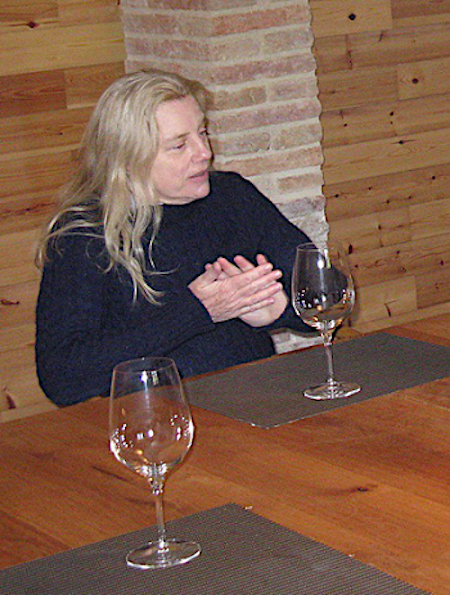 A few years later, Daphne met René Barbier, the aforementioned Catalan winemaker, at a fair and he told her about his vision for a new project in the Priorat, a historic wine region that was virtually unknown at the time. René had been selling his grapes to the coop and wanted to begin making wine from his grapes. He approached friends and encouraged them to buy their own plots of land, with the goal of building a winery where they all could share the space and craft their own wines under the same roof. Daphne and three other friends joined in with René on the project. She stayed at René's project until 2000, but with the group's production increasing, "the winery was bursting at the seams," and she decided to "go it alone."
A few years later, Daphne met René Barbier, the aforementioned Catalan winemaker, at a fair and he told her about his vision for a new project in the Priorat, a historic wine region that was virtually unknown at the time. René had been selling his grapes to the coop and wanted to begin making wine from his grapes. He approached friends and encouraged them to buy their own plots of land, with the goal of building a winery where they all could share the space and craft their own wines under the same roof. Daphne and three other friends joined in with René on the project. She stayed at René's project until 2000, but with the group's production increasing, "the winery was bursting at the seams," and she decided to "go it alone."
Starting Clos Erasmus with two hectares of vineyards in 1989, Daphne slowly added additional plots to reach 10 hectares in 2004. She planted Cabernet Sauvignon, Syrah, and Garnacha vines to complement the existing old-vine Garnacha plantings and farmed them biodynamically. She basically learned her winemaking "on the job" under the guidance of René and others. To quote Daphne, "I was not ambitious, I wanted fun. If you are not afraid of competing, you can do your own thing."
The Wines. Daphne crafts two wines: Clos Erasmus, her flagship wine, and Laurel, a softer, lighter wine. Clos Erasmus was awarded 100 Parker points for the 2004 and 2005 vintages, a result that brought a good deal of attention to the wines of the Priorat. The recognition also established Daphne's reputation as a leading winemaker in Spain and internationally. Her winery's current production is 2000 12-bottle cases, 250 cases of Erasmus and the rest being Laurel. Her wines continue to garner high ratings. For example, the Wine Advocate described her 2013 Erasmus as "magnificent" and among the top three wines from Spain in 2016.^1
American importer Eric Solomon, the owner of European Cellars located in North Carolina, tasted the first vintage of Clos Erasmus in 1990 and immediately contacted Daphne to purchase all that was still available! Little did she know that this interest would lead to their meeting in person a few years later and then marrying in 1997. Daphne now lives in North Carolina several months of the year.
As she rushed out the door to catch her plane, Daphne gave us bottles of her wine we had been tasting, the 2012 Clos Erasmus and the 2012 Laurel. They had been opened for wine writers from the Wine Advocate and Wine Spectator who had been visiting earlier that morning. It was fortuitous timing for us, both of these amazing wines were gifted to us!
Sandra Doix Mora
Watching her parents, who are her role models, "led her to love wine."
Mas Doix, established in 1998, is a small family-owned and -run winery in Poboleda, a community of some 360. The winery builds on a family winegrowing tradition that goes back to the 1850s, its current vineyards having been planted by the family in 1902.
Our meeting early on a Friday morning was literally a meeting across generations. We not only met with Sandra Doix Mora, the winemaker and her mother, Maite Mora Pamies, the viticulturist, but we also were joined part of the time by Sandra's paternal grandfather, the former viticulturist for the property and who had taught Maite her exacting craft.
The story of Mas Doix wines begins in 1997. This was the year that Sandra's paternal grandfather had decided to retire and wanted to rent out the family's vines. Sandra's father, who had his own business, suggested that they try to produce a red wine, "but the question came up about who would maintain the vines." Maite Mora Pamies, Sandra's mother, responded that she would.
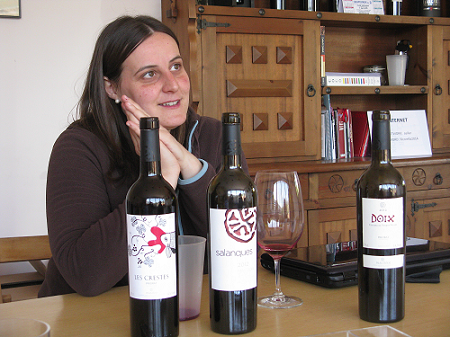 The family was working with bush vines, which not only produce better grapes than other vines grown in the area but also live longer as a result of this form of viticulture. Maite learned, and continues to use, the viticultural techniques of her father-in-law, which require two specific styles of grafting, one after pruning in March or April, and one in June. The grafting involves cutting the old vine off at ground level, slitting the root, and inserting the new vine in the slit. As a result, the graft benefits from the roots of the old vine, roots that may reach some 40’ deep in the slate-based “soil,” a term to be used advisedly in this terrain! The techniques associated with this type of grafting make it a challenge to effect even for experienced viticulturists.
The family was working with bush vines, which not only produce better grapes than other vines grown in the area but also live longer as a result of this form of viticulture. Maite learned, and continues to use, the viticultural techniques of her father-in-law, which require two specific styles of grafting, one after pruning in March or April, and one in June. The grafting involves cutting the old vine off at ground level, slitting the root, and inserting the new vine in the slit. As a result, the graft benefits from the roots of the old vine, roots that may reach some 40’ deep in the slate-based “soil,” a term to be used advisedly in this terrain! The techniques associated with this type of grafting make it a challenge to effect even for experienced viticulturists.
When the family made its decision to produce its own red wine, Sandra was only fourteen years old. Thus, from a young age, she participated in all aspects of the winemaking process with her family, from the vineyards to the cellar. For her, winemaking was also a combination of chemistry and biology, the subjects she most loved.
Sandra attended the Universitat Rovira i Virgili in Tarragona and completed her degree in oenology in 2009. She then went to Spottswoode Winery in Napa for a four-month internship. She had a second internship in Australia planned, but her parents needed her at home: In 2008 the family had decided to increase the size of its facility to meet the global demand for its wine, sparked by high ratings from Parker, and they needed her help. By 2010, Sandra was the winemaker at Mas Doix.
Sandra sees her work at Mas Doix as "preserving a way of life, a culture, and as a way to elaborate authentic wines that transmit the Priorat terroir." The entire family is involved in sharing in the multitude of winery and vineyard tasks. Everything in the vineyard is done by hand, "touch is essential," said Maite and Sandra agreed. Their wines are made with minimal intervention and aged in French oak. Bottling is done without any fining or filtering, and approximately 45,000 bottles are currently produced annually. Sandra's husband works elsewhere but assists with harvest and other activities, and loves being involved.
The Wines. Mas Doix wines have consistently received national and international acclaim. For example, the 2015 Mas Doix 1902 Centenary Carignan was awarded 96 points by the Wine Advocate and its predecessor, the 2014, a 97+; these wines are produced from the Cariñena (Carignane) vines first planted by the family. Their Salangues and 'Doix' Costers de Vinyes Velle are also well reviewed, as is their Les Crestes, a wonderfully fruity and expressive young Priorat wine, which is quite reasonably priced. We brought back a lovely bottle of 2010 Mas Doix 'Doix' Costers de Vinyes Velle (95 points Wine Advocate) and look forward to enjoying it in a few years.
Isabel Fortuny
When it came time to decide what to study, she knew it had to be "outside work."
Isabel Fortuny was born in the small village of El Catllar close to Tarragona, where she still lives, and grew up in a farming family. Her grandfather and father, and now mainly her younger brother, work the family farm, including growing olives and caring for its vineyards. When it came time to decide what to study, she knew it had to be "outside work."
She decided on agricultural engineering and studied at Universitat Rovira i Virgili in Tarragona. When she finished her degree, she was too young to work as an engineer and so decided to study viticulture and oenology. She found that she "really liked it." She worked for a short time in the lab of a large winery and then, in January 2003, went to Australia for an internship. She told us that her internship experience "confirmed that my passion is to make wine." This passion could definitely be felt throughout our conversation and visit!
When Isabel returned from Australia in June 2003, she worked a harvest at Bodegas Torres. It was there that she met Raül Bobet, the person who has been an important teacher and mentor.
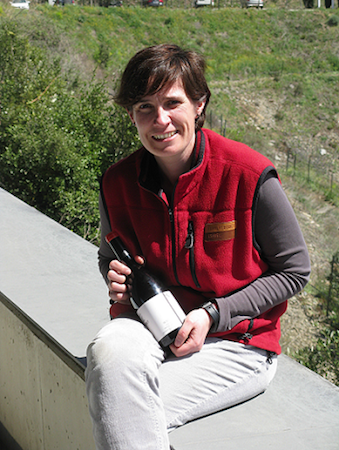 Raül, who was at Bodega Torres for many years as a technical director, was involved in a new project, Ferrer-Bobet, close to the small village of Porrera, population of some 460, in the Priorat. He recruited Isabel for a position with the project, which she started in October 2003.
Raül, who was at Bodega Torres for many years as a technical director, was involved in a new project, Ferrer-Bobet, close to the small village of Porrera, population of some 460, in the Priorat. He recruited Isabel for a position with the project, which she started in October 2003.
Isabel now holds the title of Oenologist at Ferrer-Bobet. She has been involved in all aspects of the project's development, has been given increasingly more responsibility over the years, and loves the demanding nature of her work. Her background in agricultural engineering fits well with the winery's focus on strictly organic viticulture and respect for the biodiversity of the unique Priorat terroir. The winery's first vintage in 2005 used grapes from the hundred-year-old Cariñena (Carignane) and Garnacha Negra (Grenache) vines located on the steeply terraced property (see photo, below). Additional vineyards were planted in 2004 with varietals such as Syrah and Cabernet Sauvignon as well as Cariñena and Garnacha Negra, all of which are farmed organically.
We were impressed with the design of this very modern-looking winery, which uses gravity throughout the whole process of winemaking, from arrival of the fruit to bottling. We were shown the 10-kg harvesting crates used in the first step of vinification and the double sorting table used for rigorously selecting the grapes. Isabel finds that teaching others how to sort is among the hardest aspects of the winemaking process!
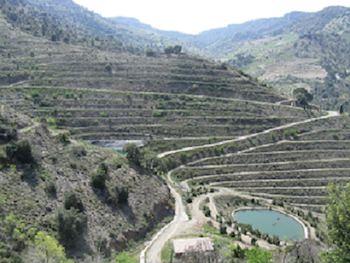 Her parents and four siblings live close to Porrera and often come by to visit or help, especially during harvest. Her father, in particular, is happy that Isabel is a winemaker and is carrying on the family's love of vineyards. Not surprisingly, he is very proud of her career path and her accomplishments.
Her parents and four siblings live close to Porrera and often come by to visit or help, especially during harvest. Her father, in particular, is happy that Isabel is a winemaker and is carrying on the family's love of vineyards. Not surprisingly, he is very proud of her career path and her accomplishments.
The Wines. Isabel feels appreciated for her work and is very invested in the high standards set by the winery. Its wines consistently receive high ratings, such as the 93 points awarded by the Wine Enthusiast for the 2009 Selecció Especial Red and the 95 points awarded the 2008 Ferrer Bobet Priorat Vinyes Velles. We had a lovely tasting in the winery's beautiful glass-walled tasting room overlooking the magnificent steeply hilled countryside and terraced vineyards. Both the 2012 Ferrer-Bobet Vinyes Velles and the 2011 Selecció Especial, which is from specially selected parcels, were impressive.
Maria Sangenís I Vaqué
The renewed interest in the Priorat gave her the future she had hoped for with her family's winery.
The story of Sangenís I Vaqué, S.L begins in the 18th century with a family that produced wines. Fast forward to the 20th century and to 1973, when Maria's parents, Conxita and Pere, married. At that time, her mother inherited a winery and her father had a connection to the historic family vineyards. Bodega Sangenís I Vaqué was founded five years later. The family survived by selling its wine in bulk and marketing other products such as olives and nuts that they produced. Until the resurgence of interest in the Priorat area, it was a very hard life for Maria's parents and their four daughters.
Maria Sangenís I Vaqué, the second youngest of the four daughters, cared deeply about the family winery and what her parents were wanting to accomplish in the face of very difficult odds. The renewed interest in the Priorat was a gift of sorts, as it meant that Maria could have a future in her family's winery.
In 2000, Maria began five years of study at the Universitat Rovira i Virgili in Tarragona, in food engineering for the first three years and then in enology for the last two years. She completed a practicum in Ribera del Duero in 2006 and then began working with her father at the winery. He had revived the tradition of winemaking in the old cellar that belonged to Conxita's grandfather and had rebuilt parts of the winery in 2000. Maria said that she has learned as much, if not more, from her father than she did at the university. She is also well networked with the other young winemakers in the Priorat.
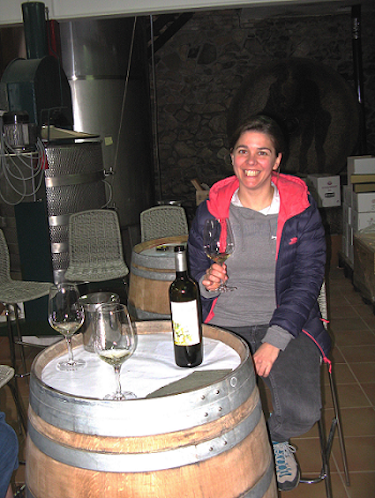 Maria, who is soft-spoken and quietly radiant, is thrilled to be able to carry out the family's winemaking traditions. She is involved in all aspects of the winemaking and finds the work challenging and personally rewarding. She also has the added responsibility of being in charge of selling the wines!
Maria, who is soft-spoken and quietly radiant, is thrilled to be able to carry out the family's winemaking traditions. She is involved in all aspects of the winemaking and finds the work challenging and personally rewarding. She also has the added responsibility of being in charge of selling the wines!
The winery is small but masterfully rebuilt by her father in 2000 in order "to work smart" (e.g., barrels are not moved about in the cellar; rather, different sections of the floor are moved for this and various other winery activities). They farm organically and use only their own grapes from the family's old vines, which are hand picked.
Sangenís I Vaqué produces some 25,000 bottles each year. Its wines are typically aged in French and American oak for 12 months. They are then bottled unfined and unfiltered, as we observed during our visit. As Maria explained, "this places their wines amongst the purest and most traditional."
The Wines. The winery's tasting room is totally unassuming and absolutely charming, as is the very talented Maria. We tasted many excellent wines, including its consistently highly rated Clos Monlleó, Coronya, and Val Por, and Maria's own project, the 2013 Lo Coster Blanc. The Clos Monlleó Gran Reserva 2000 was awarded a silver medal by Decanter World Wine Awards 2014. For their Coronya, their Garnacha and Cariñena are blended 50:50, as they were historically. We brought back bottles of the 2001 Sangenís I Vaqué Coranya and the 2000 Clos Monlleó Gran Reserva (!!) and look forward to enjoying each of them.
Mireia Torres Maczassek
She seamlessly blends the artistic with the scientific and the modern with the medieval.
Winemaking was likely an inevitable career path for Mireia Torres Maczassek. She was born in Barcelona in 1969 and grew up in a family in which nature was salient, as an inspiration for her mother's art and as a necessity for her father's vineyards. Her mother is a well-recognized painter, and her father, who initially studied chemical sciences in Barcelona and ultimately specialized in oenology and viticulture at the University of Dijon, is a well-known winemaker.
Mireia attended the Institut Químic de Sarrià in Barcelona and graduated with a degree in Chemical Engineering in 1994, specializing in Analysis. She moved to France the next year to study oenology and viticulture at the Ecole Nationale Supérieure Agronomique de Montpellier. A few years later, after working for a chemical manufacturer of resins and flocculants, she decided to join the family company, where she thought she could better develop her scientific interests.
She led the analysis laboratory for the company for one year and then was asked to head up its Research & Development (R&D) and innovation areas. In 2004, she became Head of Winemaking of the company, and over the next six-year period led many successful projects in the areas of winemaking and viticulture, including the development of Torres Priorat, which had its first vinification in 2005 and moved to its own winery in 2008.
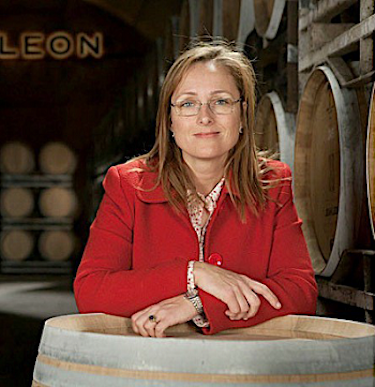 Mireia, who holds the title of Director of both Bodegas Jean Leon in Penedès and Torres Priorat, is an impressive winemaker and research scientist.
Mireia, who holds the title of Director of both Bodegas Jean Leon in Penedès and Torres Priorat, is an impressive winemaker and research scientist.
Our discussions about Mireia's career path took place over lunch at Mas Rabell, the historic Catalan country house that has been in her family for many years. The food was wonderful, of course, and the pairings with the Priorat and Jean Leon wines excellent. What we most learned, having already read a great deal about the Torres family, was how likeable Mireia is! We talked about her wonderful children, her interest in psychology, and the goal we all have to live an authentic life. And naturally, we discussed wine.
The Wines. Torres Priorat and the Priorat wine region have a very special meaning for Mireia. She spoke quite poetically about the magic of the region, which we clearly understood when we visited Torres Priorat a few days later. It is located in the small village of El Lloar, which has a population of fewer than 200. We were simply amazed by what Mireia was able to create there, where she led the development and implementation of the project. It is a state-of-the-art winery that seamlessly blends the artistic with the scientific and the modern with the medieval. Its solar panels provide a high percentage of the energy required for the facility.
Mireia crafts two well-known and consistently highly rated Priorat wines, Torres Salmos and Torres Perpetual. The Torres Salmos is in homage to the monks of the Carthusian order who cultivated vines in the Priorat as early as 1095. The Torres Perpetual, a flagship wine for the Priorat winery, reflects the family's commitment to this important wine area. A bottle of each, the 2012 Salmos and the 2012 Perpetual, made the trip back to California with us!
The Priorat and Its Uniqueness
Similar to the U.S., increasing numbers of women in the three wine regions of Spain we have visited are earning degrees in agronomy and enology. This particularly appeared to be the case in Catalonia, where a number of the winemakers with whom we met were taking advantage of the excellent programs for studying winemaking at its various universities.
The Priorat appears unique among these regions, however. All the winemakers with whom we met talked about its uniqueness, not only as a challenging wine-growing area but also as a region of particular promise for women as viticulturists and winemakers. Wine regions such as the Priorat that are experiencing growth generally provide more opportunities for women than more established regions because more positions are available for which they can compete. In addition, as Daphne Glorian-Solomon noted, in Catalonia, women inherit the family estate and keep property ownership after marriage. Inheritance thus allows women a leadership role in agriculture not customary in other cultures. Similarly, others we talked with mentioned that in the Priorat it is more usual for women than for men to work the land and to be involved in making wine, and to be known for their persistence. Thus, compared to other areas of Spain and the U.S., the Priorat may be a particularly promising region for women in the wine industry, in general, and for viticulturists and winemakers, in particular.
A number of the winemakers with whom we met also talked about the current atmosphere of "sharing information." Twenty years ago, people in the wine industry were described as "working with closed doors." Now winemakers and viticulturists share information and share a strong commitment to sustainability, organic viticulture, and respect for the biodiversity of the Priorat countryside. Perhaps this atmosphere of sharing is one indication of the greater presence of women and how their presence contributes positively and significantly to the current and future winemaking efforts in the Priorat.

We toast these five iconic winemakers of the Priorat and wish them well! To quote Sandra Doix Mora, without exception, they see their work as "preserving a way of life, a culture, and as a way to elaborate authentic wines that transmit the Priorat terroir."
***
Author Bios: Lucia Albino Gilbert, PhD, and John C. (Jack) Gilbert, PhD, both Professors Emeriti, have had long and distinguished careers at The University of Texas at Austin and Santa Clara University and are widely published in their respective fields. Their research on facilitating women's career success in male-dominated scientific fields such as winemaking combines Lucia's academic field of Psychology and John's academic field of Organic Chemistry. They can be reached at [email protected]. Their research website is www.womenwinemakers.com.
Content for this article came from our conversations with the winemakers, the winery websites, and additional information they provided us about their wineries and their wine region.
^1. Quoted from the Wine Advocate.
